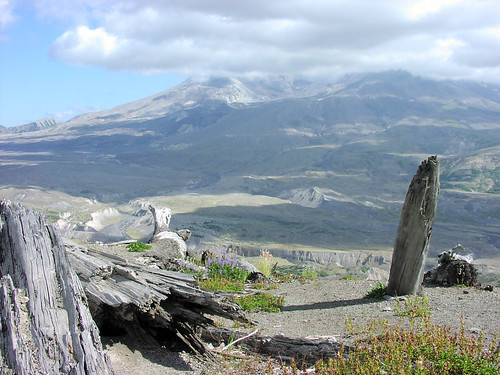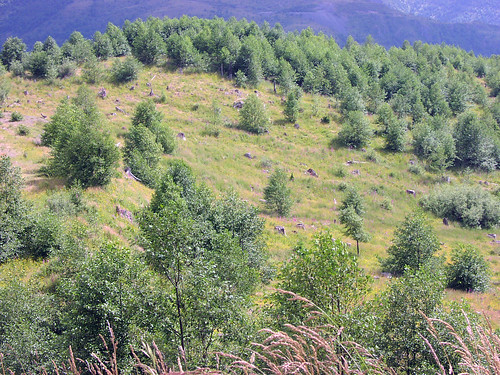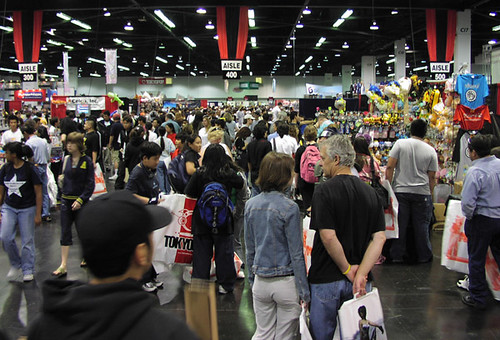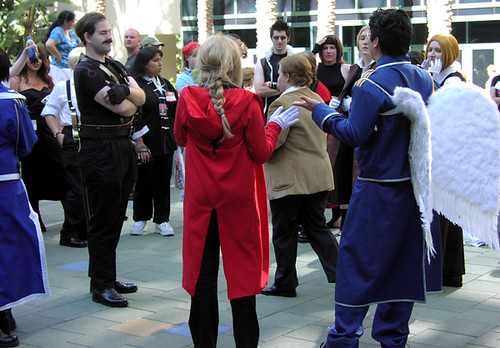The USDA confirmed last week that a cow, identified in November of 2004 as possibly having mad cow disease (bovine spongiform encephalopathy, BSE), did indeed have the disease (
AP story,
USDA press release). Mad cow disease, which is linked to variant Creutzfeldt-Jakob disease (vCJD) in humans, is caused by infectious proteins called prions. Prions remain infectious even after cooking, washing, and boiling (NINDS 2005), and even autoclaving can fail to destroy all prions in a sample (McDonnell and Burke 2003).
The prions that cause BSE are spread almost exclusively by consumption of infected animal tissue. Thus, even though prions are difficult to destroy, BSE is one of the most preventable animal diseases around: stop feeding dead infected animals to cattle, and you should completely prevent the spread of the disease (and stop feeding infected cattle to humans and you stop vCJD). Britain enacted a ban on feeding meat and bone meal (MBM, rendered tissues of dead livestock) to cattle in 1988, whereas the US waited until 1997 to enact a "ruminant-to-ruminant" feed ban (Pruisner 1997, USDA press release; see below for more information on this feed ban).
The recently confirmed case of BSE comes from a cow which was apparently born before the feed ban in the United States. Thus, it is highly likely that this cow got BSE by consuming feed which contained BSE prions, which leads us to two conclusions: 1) BSE was present in the animal(s) used to produce the feed fed to this cow, and, 2) it is possible that other cattle raised at the same time on the same feed are also infected with BSE.
Just this week the USDA
reported that the cow apparently came from a herd in Texas, and they are attempting to track down related animals. When the case was first confirmed the USDA only reported that "there is no evidence the animal was imported" (
AP story). The USDA press release from last week says an investigation is ongoing.
The USDA has responded to this newly found case of BSE primarily by mandating that anytime an initial BSE test for an animal returns a positive, the agency must run two more tests on the animal's tissue, instead of one, to confirm the presence of BSE (USDA press release). That's it.
The agency is mostly testing "high risk" animals, which are:
Nonambulatory cattle;
Cattle exhibiting signs of a central nervous system disorder;
Cattle exhibiting other signs that may be associated with BSE, such as emaciation or injury; and
Dead cattle. (information from USDA BSE Testing Program FAQ)
The agency details its testing strategy in this
PDF (USDA 2004). This document makes it clear that the goal of the USDA's testing is solely to determine if BSE "is prevalent at a specified level in the sampled population" (USDA 2004). While the testing can be used to infer the prevalence of BSE in the cattle population at large, this testing regimen is not explicitly designed to do so.
In other words, the USDA is not testing whether the cattle currently being processed for food are free from BSE. In fact, the USDA has actually prevented some beef producers from voluntarily testing all of their cattle for BSE (I wrote about this
here), and the majority of animals the USDA tests would never have been fed to humans anyway (since they are high-risk). While limiting testing to at-risk animals makes some sense statistically (if you're looking for a disease it makes sense to look in the high-risk population), it is hardly reassuring from a public health perspective.
We now have a known case of BSE, and thus we can no longer state that the prevalence of BSE in US-born cattle is 0; thus, there is a possibility of a public-health risk. Since this is the first US-born cow the USDA has found BSE in after a large number of tests (USDA reports 388,000 tests have been run), the USDA is saying that we can infer that the prevalence of BSE in the cattle population is relatively low (USDA press release). However, while running 388,000 tests sound reassuring, testing for BSE is quite difficult and inefficient, as the USDA (2004) report indicates:
"The earliest point at which current testing methods can detect a positive case of BSE is approximately 3 months before the animal begins to demonstrate clinical signs. Also, the incubation period for this disease - the time between initial infection and the manifestation of clinical signs - is generally very long, on average about 5 years."
In other words, cattle can appear perfectly healthy for more than five years while infected with BSE, without showing any symptoms. These non-symptomatic BSE-infected cattle would not appear to be high-risk animals, and thus would have a very low likelihood of being tested under the current USDA testing plan.
So, it is possible that other cattle from the infected cow's herd, which may also have been infected with BSE, were sent to slaughter before they exhibited symptoms, and thus they would probably not have been tested for BSE before becoming food for humans.
Additionally, the government has not closed off all possible mechanisms through which infected animal tissues could be fed to cattle. An
AP article has more details:
The Food and Drug Administration (FDA) promised to tighten feed rules shortly after the first case of mad cow disease was confirmed in the US, in a Washington state cow in December 2003.
"Today we are bolstering our BSE firewalls to protect the public," Mark McClellan, then-FDA commissioner, said on Jan. 26 last year.
The FDA said it would ban blood, poultry litter and restaurant plate waste from cattle feed and require feed mills to use separate equipment to make cattle feed. Chicken litter is ground cover for the birds that absorbs manure, spilled feed and feathers.
However, last July, the FDA scrapped the restrictions. McClellan's replacement, Lester Crawford, said an international team of experts assembled by the Agriculture Department was recommending even stronger rules, and the FDA would produce new restrictions in line with those recommendations.
Today, the FDA still has not done what it promised to do. The agency declined interviews, saying in a statement only that no timeline exists for new restrictions.
[snip]
Ground-up cattle remains left over from slaughtering operations were used as protein in cattle feed until 1997, when an outbreak of mad cow cases in Britain prompted the US to order the feed industry to quit doing it.
Unlike Britain, however, the US ban has exceptions. For example, it's legal to put ground-up cattle remains in chicken feed. Feed that spills from cages mixes with chicken waste on the ground, then is swept up for use in cattle feed.
Scientists believe the BSE protein will survive the feed-making process and may even survive the trip through a chicken's gut.
The presence of these loopholes is worrisome, especially now that we have confirmation that BSE exists in the US population of cattle. These loopholes clearly demonstrate that the government is failing to do everything it can to prevent BSE from spreading through the US cattle population. Instead of saying that they'll immediately work to prevent all possible methods of feeding infected animal tissue to cattle and humans, and working to ensure that animals fed to humans are safe, all the USDA did was mandate that one more test be carried out on already suspected animals.
References:
AP. June 19, 2005. Activists demand US enforce ban on slaughterhouse waste as livestock feed. Taipei Times. (
link)
AP. June 24, 2005. Tests Confirm Second Mad Cow Case in U.S. Yahoo! news. (
link)
National Institute of Neurological Disorders and Stroke (NINDS). May 2005. Creutzfeldt-Jakob Disease Fact Sheet. (
link)
Prusiner SB. 1997. Prion diseases and the BSE crisis. Science. 10;278(5336):245-51. (
full-text)
McDonnell G and P Burke. 2003. The Challenge of Prion Decontamination. Clinical Infectious Diseases. 36:1152-1154. (
link)
Radagast. October 14, 2004. Science and Politics. (
link)
Scotsman.com. July 1 2005. Home-Grown 'Mad Cow' Traced to Texas Herd. (
link)
USDA. 2005. USDA Announces BSE Test Results and New BSE Confirmatory Testing Protocol. Release No. 0232.05. (
link)
USDA September 2004. USDA BSE Surveillance Plan: Background On Assumptions and Statistical Inferences. (
PDF link)
USDA FAQ. USDA's BSE Testing Program FAQ. Last access date: July 1, 2005. (
link)















